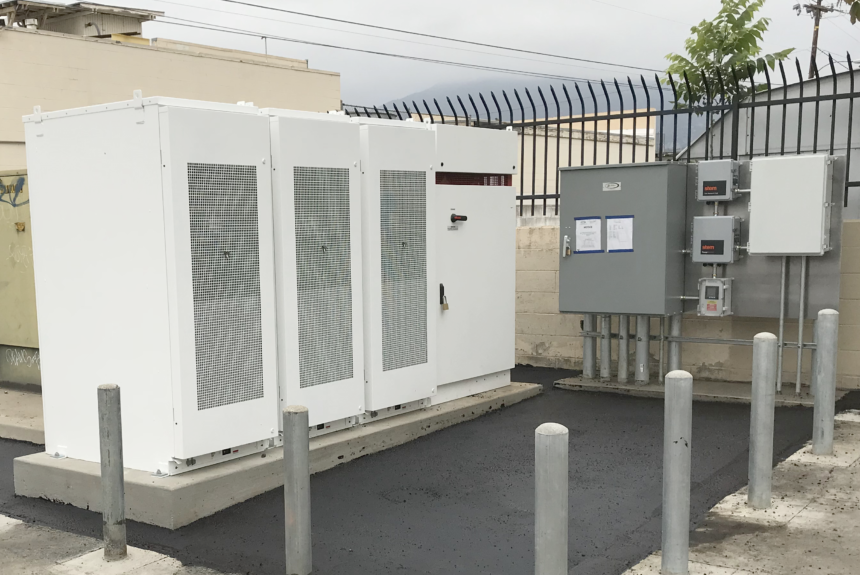To America’s men and women in uniform, power outages are unacceptable. A loss of power at one base can have cascading effects that undermine our national security. That is why I firmly believe in the phrase, “Mission assurance through energy assurance.”
In today’s highly complex and dynamic energy environment, our nation’s military is seeking to detach from the commercial grid and develop more reliable, distributed generation systems inside their fence line. As a global leader in artificial intelligence (AI)-driven clean energy storage services, Stem, Inc. delivers and operates battery storage solutions that maximize renewable energy generation and help build a cleaner, more resilient grid. We firmly believe that smart storage will and must be part of these demand generation (DG) and microgrid systems.
A central goal for the Department of Defense (DOD) is to ensure more flexible and “on-demand” energy systems that ensure resilience for our nation’s critical infrastructure. As we have seen firsthand, energy storage projects across the country have effectively proven the value of clean resilience solutions, and comprehensive policy support and federal legislation are now needed to further scale implementation. Stem brings extensive experience to empower government clients like the DOD to enhance their energy resilience, guarantee energy cost savings and performance, and optimize energy asset health and longevity.
The growth of renewable energy in the U.S. – driven in part by the federal Production Tax Credit (PTC) and Investment Tax Credit (ITC) for wind and solar energy, respectively – has reduced greenhouse gas (GHG) emissions and accelerated our march to full power sector decarbonization. But because wind and solar aren’t always available, a technology is needed to solve intermittency associated with both and that technology is smart energy storage. By storing renewable energy when it’s generated and dispatching it when it’s needed, storage amplifies renewable generation and makes it an “on-demand” resource.
Our country’s increasing dependence on electricity leaves us more vulnerable than ever to power outages. Outages are increasing both in frequency and duration, a consequence of both neglecting our electrical grid and the advent of more frequent and intense heatwaves, wildfires, and extreme weather. Fortunately, clean resilience solutions exist and are already protecting communities across the nation. States and cities vulnerable to outages have demonstrated the ability of solar-plus-storage technology to provide safe, clean, and continuous backup power following natural disasters and outages. Far superior to diesel generators in many ways, solar-plus-storage as well as standalone storage can provide year-round economic benefits to energy consumers and the grid.
The states most exposed to grid-damaging disasters have recognized the vital role of resilience in the electric system and have tested various solutions. In the wake of unprecedented weather events, numerous states have engaged universities and consultants to thoroughly evaluate the costs and benefits of solar-plus-storage microgrids and backup power. The states then acted on these studies by directly investing in backup power project pilots for critical facilities such as hospitals, first responder stations, water and sewage treatment facilities, and public shelters.
Energy storage solutions with renewable energy, backup power, and microgrids have repeatedly emerged as the preferred resilience solutions. They can be termed “clean resilience” due to their advantages over diesel generators and their ability to provide year-round economic benefits for end-users and the grid. They help prevent outages during extreme heat by participating in demand response (DR), lower electricity costs for all, and reduce GHG emissions. Plus, they don’t pollute local air quality, exacerbate health issues, require refueling for 24/7 power, disrupt vulnerable fuel supplies, or need natural gas “peaker plants.”
Based on Stem’s more than a decade of experience spearheading hundreds of successful projects for businesses, project developers, and utilities including electric cooperatives, these are the key clean resilience priorities that Federal legislation should adopt for the DOD and all government agencies:
Federal storage ITC should:
- Include language allowing companies to opt for a direct cash payment in lieu of tax credit for energy storage projects
- Pair the timeframe for the storage ITC with other technologies eligible under Section 48
Federal legislation should turn all electric vehicles (EVs) into full grid assets that would:
- Include stationary storage in the definition of EV charging infrastructure, eligible for all incentives and program support
- Provide grants to DC fast-charger buildouts that include stationary energy storage
- Outfit interstate rest stops with DC fast-chargers, solar, and storage (“Electric Interstates” Program), and upgrade some to resilience centers with microgrids
- Help states develop Vehicle-to-Grid (V2G) Policy Roadmaps
Federal resilience legislation should authorize government agencies to:
- Create a national standard Resilience Framework
- Provide technical assistance and tools to states for using the Resilience Framework to develop regulations and markets
- Allocate disaster relief funds to study potential reduced disaster costs with resilient grid investments
To empower energy storage as a flexible resource, federal legislation should:
- Gather the latest examples of flexible resource mechanisms and more
- Require each wholesale market to create a flexible capacity product
With more than 25 years of leadership experience at technology, energy and industrial companies, John Carrington leads the energy storage and analytics movement as CEO and Director at Stem, Inc. Stem delivers and operates battery storage solutions that maximize renewable energy generation and help build a cleaner, more resilient grid. Learn more at www.stem.com.
The views and opinions expressed are those of the author’s and do not necessarily reflect the official policy or position of C3.
